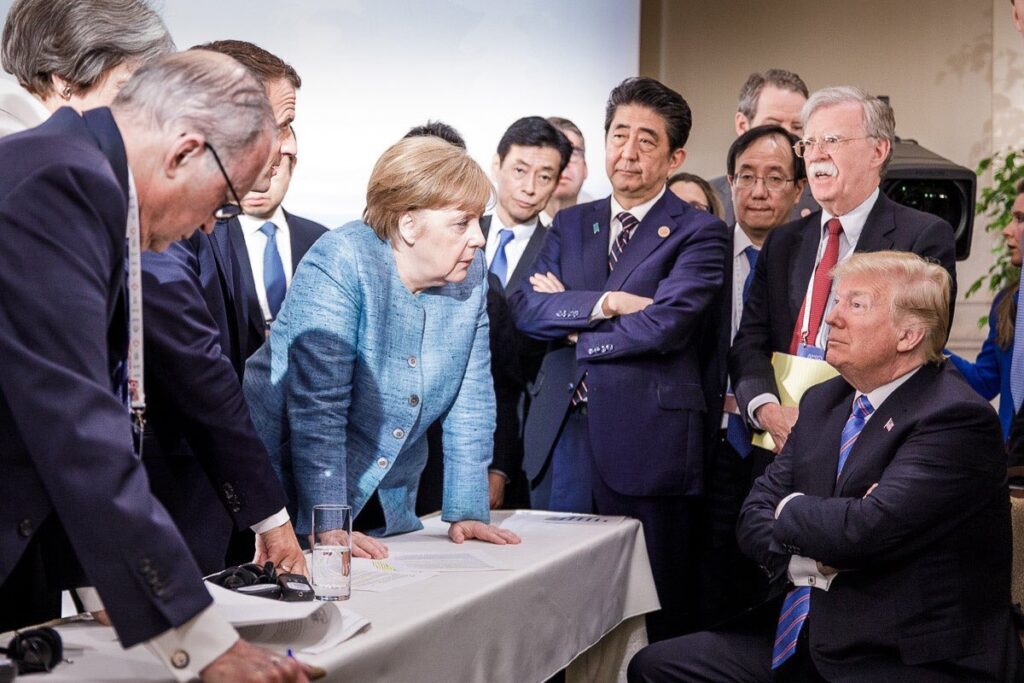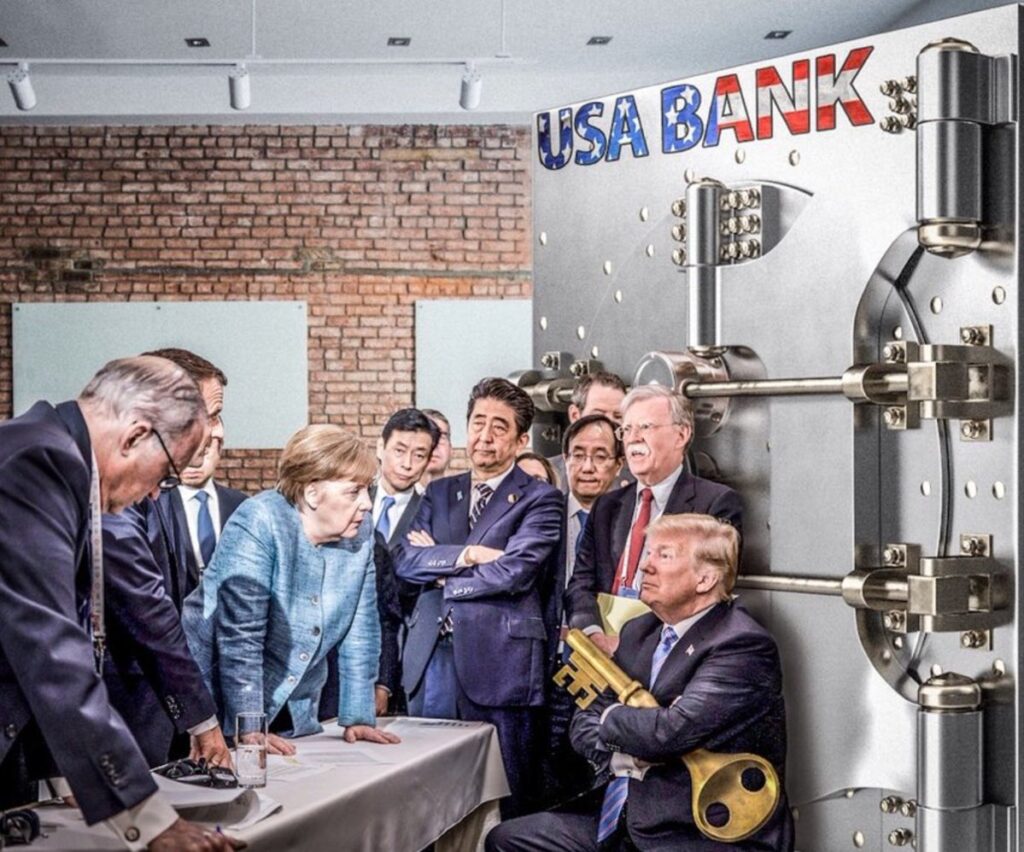Seeing Around Corners – When Donald Trump Wins
Go ahead and make some money. Elevator Speech: “MAGAnomics is essentially ‘inverse BRICS.'”
 Everyone who is a pragmatic critical thinker knows that China will: subsidize their targeted sectors and devalue their currency to lower the tariff impact of exports to the USA. Beijing controls the banks, and they did this before.
Everyone who is a pragmatic critical thinker knows that China will: subsidize their targeted sectors and devalue their currency to lower the tariff impact of exports to the USA. Beijing controls the banks, and they did this before.
As a result, the dollar value increases and imports cost less.
The Chinese imports then enter the USA at a lower price consistent with Beijing’s cost estimate as a tariff offset. Chinese actuaries are really good at this. China takes in a lower price but retains access to the USA market. That’s just how it works. The importers pay the tariff with a lowered price with a higher valued dollar. Essentially stasis is achieved in a stand-off.
Then…..
EU industrial products to Chinese manufacturing plants start to contract due to China’s aggressive cost cutting initiatives. The EU gets angry about the impact to their economy and looks for alternatives. The EU then follows the same path as China and devalues their central bank currency; further pressuring the dollar to an upward price.
Exports to the EU are now more expensive, but imports from the EU to the USA are now cheaper. Again, the EU goal is stasis.
Both scenarios create cheaper USA imports despite the Trump tariffs. However, on the EU side President Trump then ends the Marshal plan and executes a program of “tariff reciprocity” against the EU. More frustration and gritted teeth by Brussels.
 [NOTE: Avoiding this squeeze also explains why U.K Prime Minister Starmer was all snuggly to Trump at Trump Tower a few weeks ago – he’s hedging.]
[NOTE: Avoiding this squeeze also explains why U.K Prime Minister Starmer was all snuggly to Trump at Trump Tower a few weeks ago – he’s hedging.]
Exports from the USA ultimately cost more because the dollar is stronger against EU and Asia currencies. However, a stronger dollar is an offset to BRICS leverage and allows Trump to play economic chess.
President Trump then uses part of the tariff income to underwrite agriculture exports, but… here we have fun… if agriculture exports are impacted, domestic foodstuffs drop in price.
Into this dynamic Trump turns to Mexico. We have a strong dollar, all those Western Union transfers to Mexico are more valuable. Leverage is created. The economic situation then overlays the secure border dynamic and if Mexico wants to retain trade access within the USMCA agreement, the part that no one ever discusses comes into play.
 Unbeknownst to all except those who watched U.S Trade Ambassador Robert Lighthizer do it, under the USMCA trade compact the USA has first right of refusal toward any bilateral trade agreement made by Mexico or Canada. That’s correct, President Trump now controls a veto on trade agreements within USMCA partnered countries.
Unbeknownst to all except those who watched U.S Trade Ambassador Robert Lighthizer do it, under the USMCA trade compact the USA has first right of refusal toward any bilateral trade agreement made by Mexico or Canada. That’s correct, President Trump now controls a veto on trade agreements within USMCA partnered countries.
Right about now is when we can all smile, because I guarantee you there are dozens of financial trade experts who have either forgotten that Lighthizer did this, or just became aware as they pull out their USMCA portfolio looking for it. Oh, and there isn’t a damn thing the WTO can do about it.
Suddenly Xi Jinping is vulnerable in Mexico if Trump nixes the planned EV auto production investment. {GO DEEP}
Now, it is true that China likely evaluated this aspect within the USMCA in their American market analysis, but obviously determined it was worth the risk. However, with President Trump back in the White House, Beijing is financially exposed and very vulnerable on two fronts: (1) direct imports to the USA; (2) indirect imports to the USA through Mexico while Trump holds the USMCA sword of Damocles no one talked about. Big Panda not happy.
How do we know this will happen?
Good question. Answer: First, this is exactly what Trump did in 2017, 2018 and 2019 with great success. Second, because President Trump has said this is exactly what he is going to do.






Post a Comment